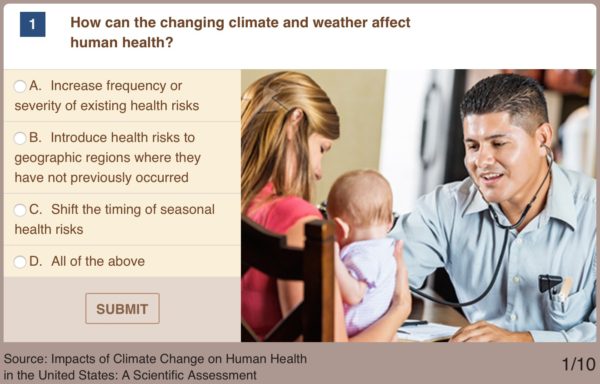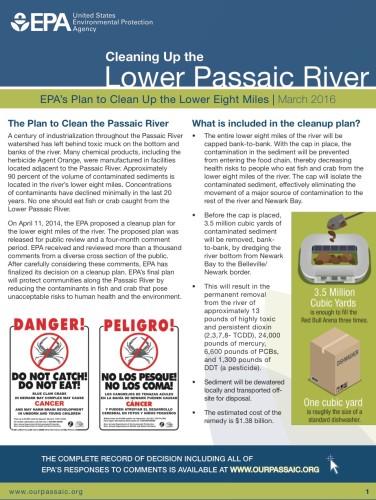
WASHINGTON – The U.S. Environmental Protection Agency (EPA) today awarded more than $7.7 million to replace or retrofit 401 older diesel school buses. The funds are going to 88 school bus fleets in 27 states, each of which will receive rebates through EPA’s Diesel Emissions Reduction Act (DERA) funding. The new and retrofitted buses will reduce pollutants that are linked to health problems such as asthma and lung damage.
In New Jersey, the five school systems that receiving retrofit funding are Orange, Lakewood, North Brunswick, Wall and Toms River.
“Thanks to DERA funding, we are protecting our children from breathing diesel emissions as they travel to school,” said Christopher Grundler, director of EPA’s Office of Transportation and Air Quality. “Nearly 17,000 of our country’s schools are located within steps of a heavily traveled road, potentially exposing more than six million children to traffic-related pollution at a time when their developing lungs are particularly vulnerable to the harmful effects of air pollution.”
Applicants replacing buses with engine model years of 2006 and older will receive rebates between $15,000 and $25,000, depending on the size of the bus. Applicants also had the option of retrofitting school buses with engine model years between 1994 to 2006 with a Diesel Oxidation Catalyst plus Closed Crankcase Ventilation system (DOC plus CCV) to reduce toxic emissions. EPA will fully fund the cost of these devices up to $4,000.
EPA has implemented standards to make newer diesel engines more than 90 percent cleaner, but many older diesel school buses are still operating. These older diesel engines emit large amounts of pollutants such as nitrogen oxides and particulate matter, which are linked to instances of aggravated asthma, lung damage and other serious health problems.
The full list of 2016 DERA school bus rebate recipients are:
| State | City | Selectee | Funding | Buses |
|---|---|---|---|---|
| AZ | Marana | Marana Unified School District #6 | $465,000 | 20 |
| CA | Moorpark | Moorpark Unified School District | $25,000 | 1 |
| CA | Soquel | Santa Cruz City Schools | $155,000 | 9 |
| CA | Tulare | Sundale Union Elementary School | $20,000 | 1 |
| CO | Glenwood Springs | Yampah Mountain High School | $20,000 | 1 |
| CT | Ashford | Town of Ashford | $20,000 | 1 |
| FL | Orlando | School Board of Orange County, FL | $240,000 | 20 |
| FL | Fort Pierce | The School Board of Saint Lucie County | $200,000 | 10 |
| IA | Bondurant | Bondurant-Farrar Community School District | $70,000 | 3 |
| IA | Lawton | Lawton-Bronson Community School District | $80,000 | 4 |
| IA | Sioux City | Sioux City Community School District | $20,000 | 1 |
| IL | St. Charles | Community Unit School District 303 | $20,000 | 1 |
| IL | Frankfort | Lincoln Way Area Special Education District 843 | $75,000 | 5 |
| IL | Mt Vernon | Spring Garden School District 178 | $20,000 | 1 |
| IN | Greensburg | Decatur County Community Schools | $75,000 | 3 |
| IN | Waterloo | DeKalb County Central United School District | $100,000 | 5 |
| IN | Goshen | Fairfield Community Schools | $40,000 | 2 |
| IN | Gary | Incandescent Transportation Solutions LLC | $25,000 | 1 |
| IN | Versailles | South Ripley School Corporation | $55,000 | 3 |
| KS | Emporia | Unified School District # 253 | $40,000 | 2 |
| KS | Sublette | Unified School District # 374 | $20,000 | 1 |
| KS | Ottawa | Unified School District # 290 | $40,000 | 2 |
| LA | Alexandria | Rapides Parish Schools Board | $100,000 | 5 |
| ME | Kennebunk | Regional School Unit 21 | $160,000 | 8 |
| ME | Sullivan | Regional School Unit 24 | $40,000 | 2 |
| MI | Haslett | Haslett Public Schools | $60,000 | 3 |
| MI | Hudsonville | Hudsonville Public Schools | $60,000 | 3 |
| MI | Whittemore | Whittemore-Prescott Area Schools | $60,000 | 3 |
| MO | Jamestown | Jamestown C-1 School | $55,000 | 3 |
| MO | Louisiana | Louisiana RII Schools District | $25,000 | 1 |
| MO | Sullivan | Sullivan School District | $40,000 | 2 |
| MO | Wheaton | Wheaton R III School | $40,000 | 2 |
| NE | Arlington | Arlington Public Schools | $20,000 | 1 |
| NE | Wahoo | Wahoo Public Schools | $20,000 | 1 |
| NJ | Orange | Belair Transport Inc. | $145,000 | 7 |
| NJ | Lakewood | Klarr Transport Service Inc. | $200,000 | 10 |
| NJ | North Brunswick | North Brunswick Township Board of Education | $85,000 | 5 |
| NJ | Wall | Student Transportation of America | $200,000 | 10 |
| NJ | Toms River | Toms River Regional Schools | $180,000 | 9 |
| NY | Brocton | Brocton Central School District | $40,000 | 2 |
| NY | Belmont | Genesee Valley CSD | $20,000 | 1 |
| NY | Huntington Station | Huntington Coach Corporation | $200,000 | 10 |
| NY | Huntington Station | Huntington Coach LLC | $200,000 | 10 |
| NY | Craryville | Taconic Hills Central School District | $20,000 | 1 |
| NY | Verona | Vernon Verona Sherrill Central Schools | $60,000 | 3 |
| NY | Whitesboro | Whitesboro Central School District | $30,000 | 2 |
| OH | Sullivan | Black River Local Schools | $20,000 | 1 |
| OH | Rawson | Cory-Rawson Local Schools | $70,000 | 3 |
| OH | Lynchburg | Lynchburg Clay Local Schools | $60,000 | 3 |
| OH | Thornville | Northern Local School District | $60,000 | 3 |
| OH | Andover | Pymatuning Valley Local School | $80,000 | 4 |
| OH | Canton | Stark County Board of Developmental Disabilities | $60,000 | 3 |
| OK | Boswell | Boswell Public Schools | $20,000 | 1 |
| OR | Lakeview | Lake County School District #7 | $40,000 | 2 |
| OR | Pendleton | Mid Columbia Bus Co. Inc | $180,000 | 9 |
| PA | Carlisle | Deitch Buses Inc. | $80,000 | 4 |
| PA | Glenmoore | George Krapf, Jr. & Sons, Inc. | $60,000 | 3 |
| PA | Philadelphia | School District of Philadelphia | $165,000 | 10 |
| SC | Columbia | SCDOE (For Anderson 1 School District) | $100,000 | 5 |
| SC | Columbia | SCDOE (For Charleston County School District) | $200,000 | 10 |
| SC | Columbia | SCDOE (For Chester County School District) | $40,000 | 2 |
| SC | Columbia | SCDOE (For Colleton County School District) | $140,000 | 7 |
| SC | Columbia | SCDOE (For Dorchester 4 County School District) | $80,000 | 4 |
| SC | Columbia | SCDOE (For Greenville County School District) | $200,000 | 10 |
| SC | Columbia | SCDOE (For Kershaw County School District) | $100,000 | 5 |
| SC | Columbia | SCDOE (For Lexington 4 County School District) | $80,000 | 4 |
| SC | Columbia | SCDOE (For Orangeburg 5 County School District) | $80,000 | 4 |
| SC | Columbia | SCDOE (For Spartanburg 3 County School District) | $40,000 | 2 |
| SC | Columbia | SCDOE (For Spartanburg 6 County School District) | $80,000 | 4 |
| SD | Hayti | Hamlin Public School District | $20,000 | 1 |
| TX | Rockport | Aransas County ISD | $105,000 | 5 |
| TX | Uvalde | Uvalde Consolidated Independent School District | $20,000 | 1 |
| UT | St. George | Washington County School District | $250,000 | 10 |
| UT | West Haven | Weber School District | $100,000 | 5 |
| VA | Alexandria | Alexandria City Public Schools | $64,000 | 16 |
| VA | Charlotte Court House | Charlotte County Public Schools | $100,000 | 5 |
| VA | Norfolk | Norfolk Public Schools | $200,000 | 10 |
| VA | Salem | Roanoke County Public Schools | $215,000 | 10 |
| WA | Vancouver | Evergreen Public Schools | $235,000 | 10 |
| WA | Lind | Lind-Ritzville Transportation Co-Op | $20,000 | 1 |
| WA | Longview | Longview Public School District #122 | $95,000 | 4 |
| WA | Northport | Northport School District | $20,000 | 1 |
| WA | Quincy | Quincy School District No. 144 | $50,000 | 2 |
| WA | Sumner | Sumner School District | $20,000 | 1 |
| WI | Spencer | Burnett Transit | $40,000 | 2 |
| WI | Dousman | Dousman Transport Co., Inc. | $200,000 | 10 |
| WI | Beloit | School District of Beloit Turner | $40,000 | 2 |
| WI | Shell Lake | School District of Shell Lake | $20,000 | 1 |
For more information about this rebate program, visit http://www.epa.gov/cleandiesel/clean-diesel-rebates.




